Ed Ryder's Blog, page 5
February 21, 2016
Book review: FERTS, by Grace Hudson
FERTS by Grace Hudson
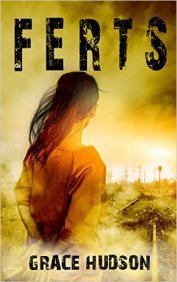
FERTS is a dystopian future story based in a compound controlled by a man called Wilcox, where women are raised and conditioned as property for the male populous outside. Each girl is assigned a category based on physical attributes; the beautiful train in seduction techniques and hope to be bought by the local townsfolk and bear their children, the strong provide entertainment through fights and the others perform manual labour within the compound. None of them want to be in Zeta Circuit, which is the lowest class of all.
The main character, Beth 201, doesn’t quite fit in to any category and does not want to conform. After some triggering events (which I won’t spoil here) she begins to rebel against her surroundings and regime. As we learn more about her character and past it becomes more obvious why, and her realisation and reactions are well realised. The past of the controller is also explored, and gives good insight to his motivations and actions. I’m a fan of proper fleshed-out antagonists so this ticked all the boxes for me in that regard.
The book deals with issues such as the obsession with looks, ownership of and violence against women, and rape (there is a strong theme of that throughout the book). If anyone says yes because they don’t have a choice, then it’s not really yes.
A few comments. After an exciting opening chapter, the second one is a huge non-POV info-dump which came as a bit of a shock. I would have preferred the information on how the compound works to be given more naturally through the text. The character of Titan (a newly transferred guard) would have been a good way to have done this. Similarly, two other characters are introduced around chapter 36 (the chapters are very short) and have adventures in one block rather than their scenes being spread out throughout the book which would have allowed the various plot threads to meet up more gradually. On a couple of occasions, I also found it a bit confusing on which character was speaking due to the formatting.
This book seems to be the first in a series, and I hope that the sequels will explain more of the central mechanic of how Beth 201 can be aware of events outside her experience, as in this book it comes across as a bit of a convenient plot device.
Still, the above are minor issues and don’t detract from the story as a whole. I read the entire book in less than a weekend so it must have gripped me! I look forward to reading the next one.
Rating: 4/5
Disclaimer and disclosure. This book was bought by me from Amazon.co.uk through BooksGoSocial.com. All opinions are my own, and I am receiving no payment for the review, either by financial or review-swap means.


February 14, 2016
From thought to release: writing a novel, part 3
I watch a lot of science fiction movies and it’s often said that a special effect without a story is nothing, however spectacular it may look. The same can be said about story and characters. We may enjoy a good story, but it’s the characters in it we care for, fall In love with, or even prey they have an early demise.
Watching as a child, the end of Return of the Jedi encapsulated all of this; great special effects that still stack up in today’s CGI splurge-fests, the culmination of an epic story of good vs evil and of course wonderful and colourful characters. Even in my cynical Generation-X years I still adore it. The final assault on the Death Star is breathtaking, but I care because Lando and the rebels are there for one last charge. The lightsaber battle between Luke and Vader may not have endless leaping about and over the top choreography (thank God!) but the scene is emotionally charged because I care about Luke’s efforts to save his father and Vader’s eventual redemption.


In Aliens I care about Ripley overcoming her fears and going back to face her terrors, the dynamic she builds with Newt and the fate of the marines. The story, pounding direction and excellent effects probably would have got it a couple of viewings, but certainly not over fifty of them!


I could ramble on for ages, but you probably get the idea by now. Memorable characters make or break your story, and they can be catagorised into many distinct forms, or archetypes:
Character types.
A brief search on the internet will reveal lots of sites with all kinds of different character archetypes. These are universal personalities which appear in most stories and share common themes and traits. Many examples will probably be from classic literature or movies, but since I’m a nerd here’s a few examples based on my favourite films and TV shows…
The hero (protagonist)
The classic hero fights for good against evil and adversity, protecting the weak and overcoming incredible odds to win through in the end. He/she will often use the same methods as the villain but has a moral code and a line that they will not cross. The hero is often an unwilling participant to start with, but gains in confidence as the story progresses. Heroes can be simplistic or complicated, questioning their decisions and having to live with the consequences.
One alternative to the classic hero is the antihero, a character who is flawed or shows traits that we normally wouldn’t associate with being ‘good’. They usually get away with this by being very charismatic. Captain Jack Sparrow is one example, as is StarLord from Guardians of the Galaxy.
 Indiana Jones
Indiana JonesThe villain (antagonist)
The main job of the villain is to make the hero’s (and everyone they care about) life as difficult as possible and prevent them from achieving their goals; be it staying alive at all, getting through high school or being reunited with a loved one.
Everyone loves a good villain and as is the case with all of the main characters we need to care what happens to them, even if it’s that we hate them and want to see them get their comeuppance. The best villains are complicated people but with clear motives; we may not agree with their methods or point of view but we can at least understand their warped logic. They can also represent a dark mirror of the hero, the result of a different choice or path not taken. Dr. René Belloq in Raiders of the Lost Ark is a good example of this, as is Callisto from Xena: Warrior Princess.
The villain doesn’t always have to be a person either, it can be the elements (eg Twister), a regime (1984) or a monster (pick any Hammer Horror movie!). It’s perfectly possible to mix things up a bit too: Nightbreed (or Cabal for the book version) is a great example of where the traditional monster villains are the heroes and the police and authorities are most definitely the bad guys.
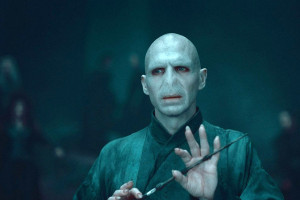 Lord Voldermort – Harry Potter
Lord Voldermort – Harry Potter
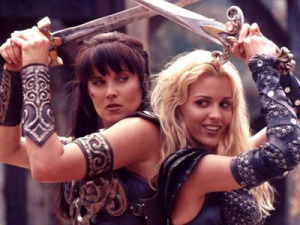 Callisto – Xena Warrior Princess
Callisto – Xena Warrior PrincessThe mentor
The mentor guides the hero with the benefit of their own experience, teaching them the skills they must learn in order to succeed. In the terms of the story they can also act as exposition for the reader/viewer to explain what is going on, without falling into the trap of having two experts talking about things they already know (Ghostbusters kind of gets around this by having Venkman not paying attention in class). Some examples of the mentor are Ben Kenobi (and later Yoda), Gandalf from Lord of the Rings, and Giles from Buffy the Vampire Slayer
 Ben Kenobi
Ben KenobiThe temptress
The temptress is there to stop the hero from achieving their goals and act as a barrier they must overcome. They are usually presented as attractive and mysterious women who use their charms to get what they want (like the femme fatales of film noir detective stories), but can be either gender or even an idea or power, as long as they distract the hero or lead them down the wrong path. Elsa in Indiana Jones and the Last Crusade is one example, or Catherine Tramell in Basic Instinct.
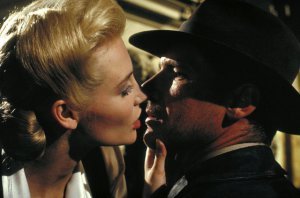 Elsa
ElsaThe sidekick
Sidekicks are a staple diet in superhero comics and movies, helping the hero on their journey and providing a moral compass to their decisions. At least in my opinion that’s what they should be, although often they are just there for (often bad) comic relief or to play the damsel-in-distress role. Buffy the vampire slayer was lucky to have an entire support network helping her, but sidekicks usually come in singular form.
My favourite sidekick of all time is Gabrielle from Xena: Warrior Princess, who epitomises everything that a good friend and ally should be.
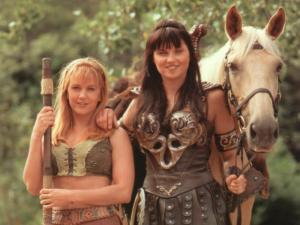 Gabrielle – Xena Warrior Princess
Gabrielle – Xena Warrior PrincessThe Damsel-in-distress
In the silent movie era the damsel-in-distress could often be found tied to railway tracks waiting for the hero to rescue them seconds before the train hit. These days the damsel can be any gender, and their main role is to distract the hero and provide drama and tension to the climax of the story. Sometimes the hero will have to choose between the damsel and his ultimate prize, but will usually find away to save both.
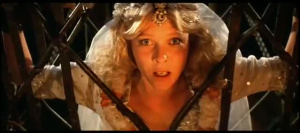 Willie Scott – Indiana Jones and the Temple of Doom
Willie Scott – Indiana Jones and the Temple of DoomCharacter arcs
Your story will demand that your main characters go through trauma (some of them may not even make it to the end) but most importantly they must change as a result of it. A character who is unaffected and sleepwalks through the narrative is not going to be very interesting to spend much time with. More of this in the next part!


February 7, 2016
A short story
Here’s a short story that I originally posted on my old blog. Enjoy!
Prepared
He looked out at his garden and admired the rough mound of earth and broken concrete that covered the shelter below. The scouting master in his childhood had always taught about being prepared; how it tipped the odds and made a man stand tall when disaster struck, while others floundered and ran. The master had survived the beaches when so many others had bled out in the sand around him, a feat entirely due he’d said to study and training while his lazy comrades smoked cigarettes and boasted to each about the girls they had known in the nearby villages. They had all died within seconds, while the master crouched behind the defences waiting patiently for the machine gun fire to briefly drift away. Preparation gave security he’d told them, and security allowed proper preparation for the next struggle. He’d taken these teachings as gospel; they made far more sense to him than the ravings of the priest in the pulpit about eternal damnation or divine forgiveness. They had shaped his life, aided his decisions and brought him now to this point.
He could see the signs, even if no-one else could. Why? he had pleaded to his wife, Why would a nation with more oil than water need to worry about building nuclear power stations? It had taken weeks of near-constant campaigning, arguing and begging but he had gradually worn her down. She trusted the fake smiles and false promises of the politicians on the television as little as he did since their nephew’s return from the war in a wooden crate. There were medals, salutes and patriotic tears at the service, and strangers had come up to them and shook their hands, saying what a noble sacrifice it was. It hadn’t changed the world, hadn’t made the ungrateful liberated hate them any less. Sacrifice was just an empty bedroom with posters still up on the walls, and a sister so lost in grief she would not feed or dress herself. So the planning had begun, meticulous and exact with nothing left to chance. He studied intensely though books and the computer; how deep to dig down, how to protect, how to secure. Things he’d never have solved of on his own; cleaning the air they exhaled, recycling the water and removing waste, all without letting the toxic air into their protected bubble. The architect the planning authorities insisted he hired once they found out thought he was mad, but took their money nonetheless. Just a big panic room he told them as he took a condescending glance over the rough drawings, but that was wrong. It would be the rest of the world panicking while they sat and watched the end of days safe and sound below.
Construction had begun early one morning with the crash of diggers breaking the earth and patio in the garden. For weeks the contractors dug, poured concrete, drank coffee, swore at nothing and invented new obstacles designed to drain their life savings all the sooner. He could see his neighbours laughing at him from across the street, their derisive comments about sanity and their anger about area house prices – he didn’t care. The shell was finally completed a week behind schedule, the heavy machinery burying it safely under a mountain of excavated earth and shattered paving blocks before trundling away, leaving a trail of mud behind splattered over the neighbours’ cars. Only the entrance and door with its keypad and locks gave clues to what lived below, the aerials and air systems to be safely enclosed behind fine grills at the surface designed to withstand the heat and fire that would surely be soon upon them. Then the internal work started with more contractors, more coffee and more money. A network of cables was laid; veins and arteries to and from the beating heart of the control panels and power sources that would keep them alive as others perished above. The work was specialised, complex and difficult and he found to his cost that different teams of different experts did not work well together, with frequent arguments and freshly completed work torn out and replaced. Their finances were drained and the bank was asking difficult questions but there was no going back now, and as he told his wife, money would not matter when the time came, only the shelter and what lied within. And now at last it was finished. Packed with months of provisions, medicines, generator fuel and secured with a thick steel door to keep out the gossiping neighbours when they came running, begging to be let in. And of course the rack of weapons to keep it all safe when the ‘civilised’ world was a distant memory and men turned on each other over charred carrion. He drilled the family once a week, every week, so when the warnings came and the sirens started they would be ready. The entry codes, the radiation protocols, changing the air scrubbers, what to do if fire broke out or a gun jammed. Whenever the news talked of impending crisis or raised tensions in the east everyone knew to stay close to home, just in case. But the warnings never came. There were no sirens, no hysterical news readers screaming at the camera and no time to react. He was at work when the bombs fell, his wife at the market and the children at school. He never even knew who started it; the lying politicians from abroad or the hawks in his own military greedy to start another war and watch the world burn. Just a flash of white and a searing heat as the blasts mushroomed overhead.
And in his garden, the shelter stood. Prepared. Secure. Empty. The neighbours banging at the door, begging to be let in.


January 20, 2016
From thought to release: writing a novel, part 2
So you have an idea, just need to write it now!
Well, not quite. Before starting it’s a good idea to know how stories are structured. If you watch a lot of films or read books then you probably already know this without realising…
The three act structure.
Many stories follow the simple three act structure of beginning, middle and end:
Everything is normal (or at least normal for the world you’ve created).
An event happens that kicks off the main story.
The protagonist reacts to what’s going on.
The protagonist starts to take control of his/her own destiny.
Something goes hideously wrong and looks like all is lost!
There’s a big climatic scene and the protagonist prevails. Hurrah!
Everyone catches their breath and continues their lives, but this story is over.
Okay so that’s a very simplified version and there are many variations and nuances but it’s amazing how many stories follow that pattern, mainly because the formula works so well. This is why many books which are split into two parts for the film version often feel very unsatisfactory (to me anyway, although Harry Potter and the Deathly Hallows just about got away with it), especially the first part.
This graph, borrowed from the Wikipedia page about the subject shows the various aspects of the three act structure in a more visual form The main problem is once you know the pattern you’ll start looking for it in everything! Here’s a good example of the film ‘Bolt’ which I watched the other week on television:
The main problem is once you know the pattern you’ll start looking for it in everything! Here’s a good example of the film ‘Bolt’ which I watched the other week on television:
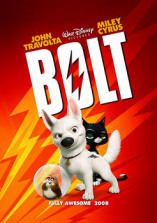
Bolt is a normal dog but is raised in a TV studio for a show with his owner Penny and made to believe he has super powers
After a mix-up at the studio he is accidently posted off in a crate and gets lost
Bolt thinks he has super-powers still and gets into various scrapes, meeting new friends along the way
Bolt, with the help of his friends works out his place in the new world and helps some other animals escape from an animal shelter. But he misses Penny and wants to go home
Bolt gets home but finds the TV studio has replaced him in the show with another dog who Penny seems to love (although this is not the case. All is lost!
A fire at the studio means Bolt has to become a real hero and rescue Penny and the two are reunited
Bolt and Penny retire from the show which continues with a different cast, although it’s not as good. Bolt shares his new life with his new friends – fade to black.
Before embarking on your journey of novel writing it’s definitely watching a load of films to see how the story adheres to that structure (it’s usually quicker than reading a book!). They follow the same pattern as books although the timings are often a bit compressed to fit in the time allowed. For many examples of this, check out The Script Lab web site!
Further reading:
For more detailed information I highly recommend two excellent books from K.M. Weiland about outlining and structuring fiction, which go from the large overall picture and drill down to the scenes themselves.
To plan or not to plan? Pantsers vs plotters
You might have a flash of inspiration and have the whole story appear at once, or you might have a few disparate scenes in your head with a huge number of gaps in between.
So what happens next?
Well, this will depend on what kind of writer you are, and seem to be distilled into two traits:
Pantser
Doesn’t really plan at all and just starts writing, getting inspiration as they go along.
Plotter
Makes sure they know where they are going, detailing the plot points and story before they start.
There are two extremes of course from detailing every single point to going off on a wild adventure of discovery, but I would imagine most people fall somewhere around the middle. The main thing to remember is that THERE IS NO RIGHT OR WRONG WAY! Just do what feels right for you. Personally, for In Vitro Lottery I worked out the main story points and roughly where I wanted to go, and it wasn’t until I was deep into writing that the whole thing started to come together and the fine details began to reveal themselves.
One example is the character of Rowena in my novel, who didn’t even exist as a player until late on in my planning. She then grew in importance and is the catalyst in the story for several of the key events. The final climax also changed quite late into development; although the end was the same one I’d originally envisioned the journey to get there was quite different.
Now you have a rough idea on how stories are constructed, does your idea fit the pattern?
Coming up in part 3: Characters and subplots


January 15, 2016
From thought to release: writing a novel, part 1
A few years ago I had the embryo of an idea that refused to get out of my head. The more I thought about it the worse it got until the embryo stared to develop into a life of its own, expanding way beyond my initial concept. New characters then started to add themselves to the cast, shaping the story and direction further by their thoughts and actions.
After a while I realised that the only way to remove the whole thing from my brain was to write it down, so after cutting my teeth on a short story I decided to take the plunge and write an entire novel, learning as I went. Bit of a silly plan in retrospect but hey here we are.
What to write about.
For potential authors writing mainly for fun, my advice would be to write about what interests you rather than what you think will sell. From initial planning to polishing the final draft, writing my novel took about two years of evenings and bits of weekends, so if you’re not excited about your story it’s going to become a slog really quickly. Depending on real life pressures it might take much longer, so if you have that 10-volume Game of Thrones-style epic in your head be prepared for the long haul.
As for where to get inspiration from, I have no idea sorry! Some people like small personal dramas, others go for sweeping space epics. My only advice in this would be to make your horizons as broad as possible. I watch a lot of films and genre TV shows, read the news daily and play a lot of computer games. Any of the above can be great sources for firing up the imagination and sparking ideas.
Research.
Tricky one this. If you want to write in a particular genre (eg vampires or gothic fiction) it may seem like a good idea to read as much as you can from that area to see how other people approach it. The main downside is that you can then bias yourself, worrying that that great idea you had is too similar to book_a or that scene was close to that bit in book_b and then you’ve stopped before you’ve even started. There are millions of stories out there and the odds of you making something truly original are pretty slim, so as long as you’re not obviously plagiarising something verbatim (hey I have this great idea about a boy who finds he’s a wizard and goes to a magic school!) you should be fine. Don’t worry, if it’s too close to something else then someone on the internet will be sure to point it out!
OMG WR1Tin lolz; your having a affect their two!
I’m a scientist by trade and a big part of my job involves writing very detailed and very dry technical documents which are then hammered by other people and peer-reviewed to an inch of their lives. This did give me somewhat of a head start when it came to writing as I already had a fairly good grasp of grammar and spelling.
The most important thing to remember is that if you are expecting people to pay to read your work, they won’t care if you’re a professional, amateur, young, old, male or female. They will care about good characters and plot, but even more importantly that they aren’t pulled out of the story every other paragraph by bad spelling and grammar. So unless you are willing to pay someone a lot of money to edit and correct things for you, a basic grounding in whatever language you write in would be a good idea. There are plenty of websites dedicated to this (e.g. Grammar.com to name but one from many) and they’re only an internet search and mouse-click away.
Need a grammar refresh? Try this!
Fame! I’m gonna live forever!
I read somewhere that Amazon publishes about half a million books per year. How many famous self-published authors can you name? Exactly. That’s not to say you won’t get that call from a major publishing house or that film deal you always wanted, but the chances are slim. But hey who cares?! We can all dream, and as long as you go into it for the pleasure of writing and sharing your work rather than fame, then if it doesn’t happen it was still worth the effort.
Many people who start writing a novel probably never finish it, so if you get to the end of the process then congratulations, you’ve made it further than most!
Coming up in Part 2 – Planning your story (or not, as the case may be).


January 11, 2016
My debut book is out!
Hi!
My name is Ed, and I’ve just released my first novel.
Over the next few weeks I’ll discuss how I did it; from the initial idea, structuring the plot and use of software tools to proofreading and eventually self-publishing.
This blog is aimed at amateur authors wanting to write long fiction as a hobby that pays for itself, rather than budding pros wanting to make a full time career out of it.





